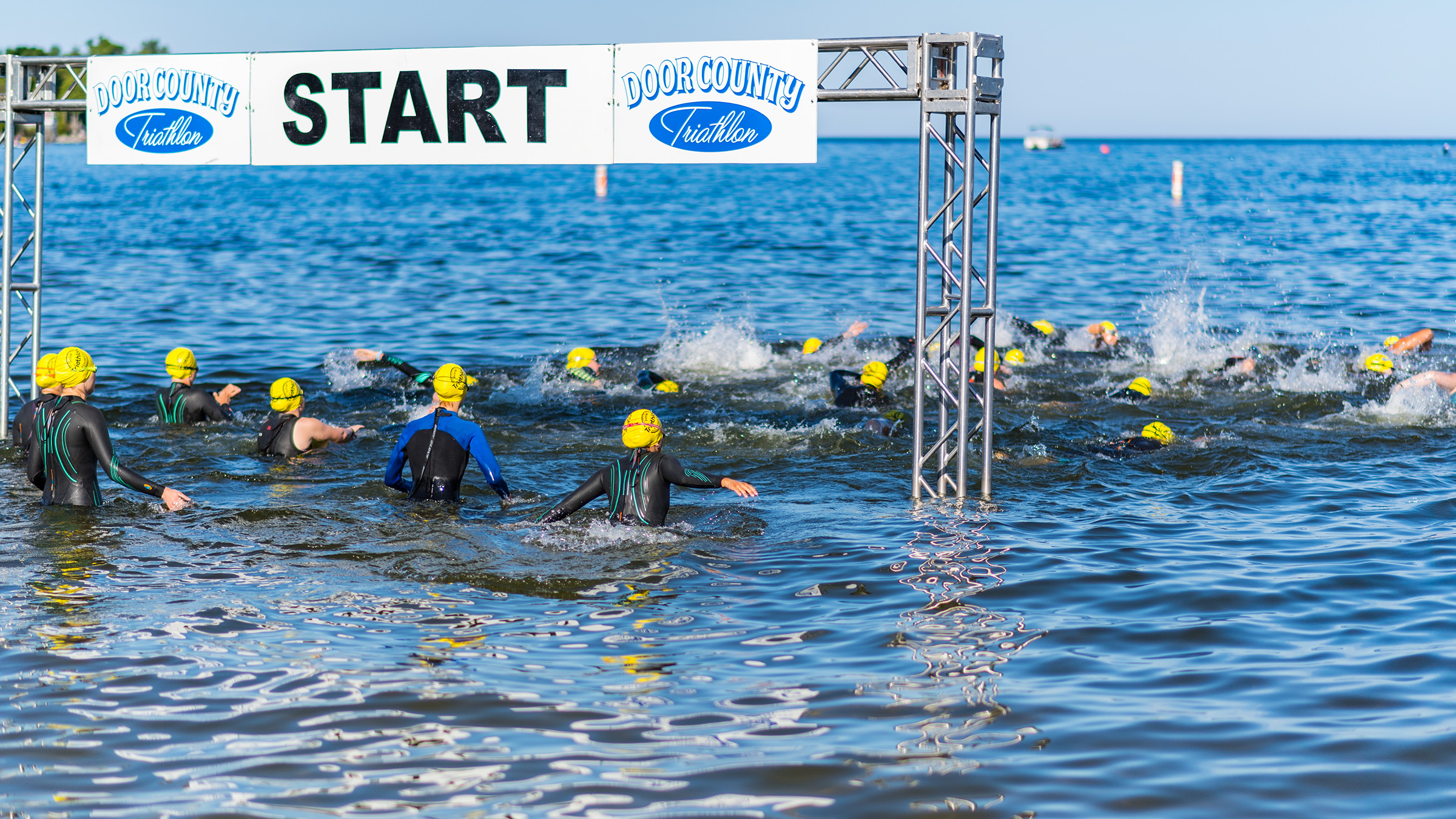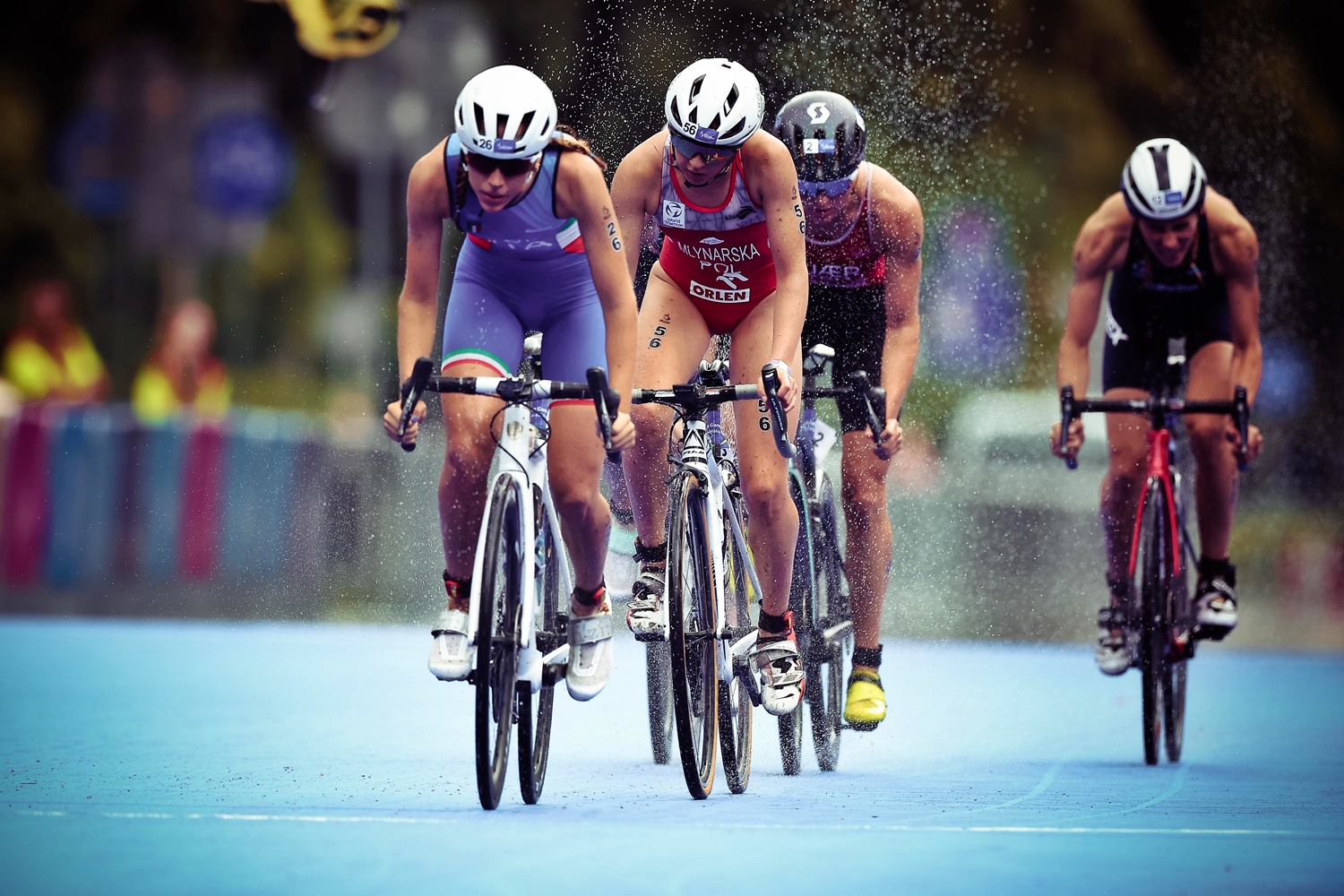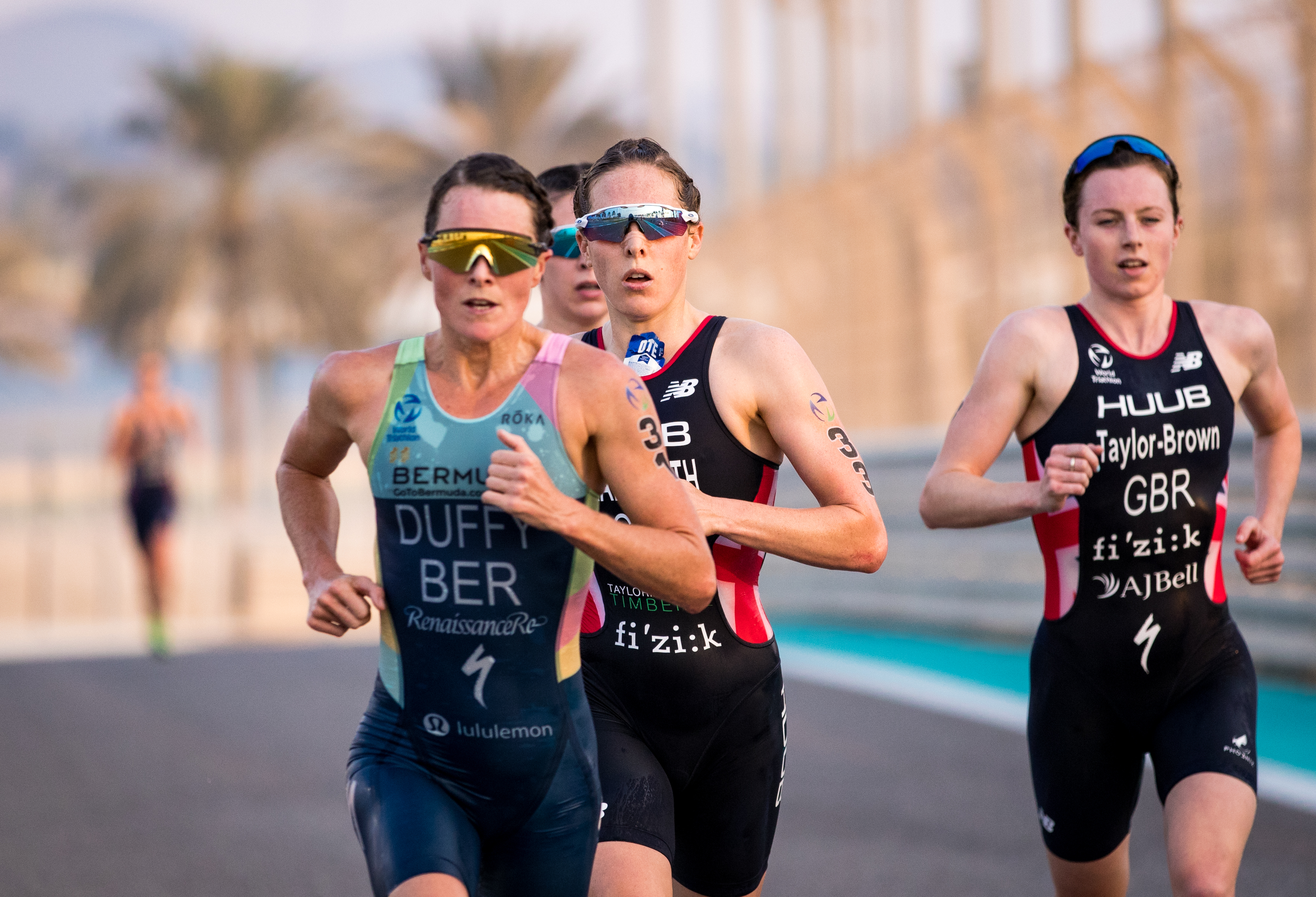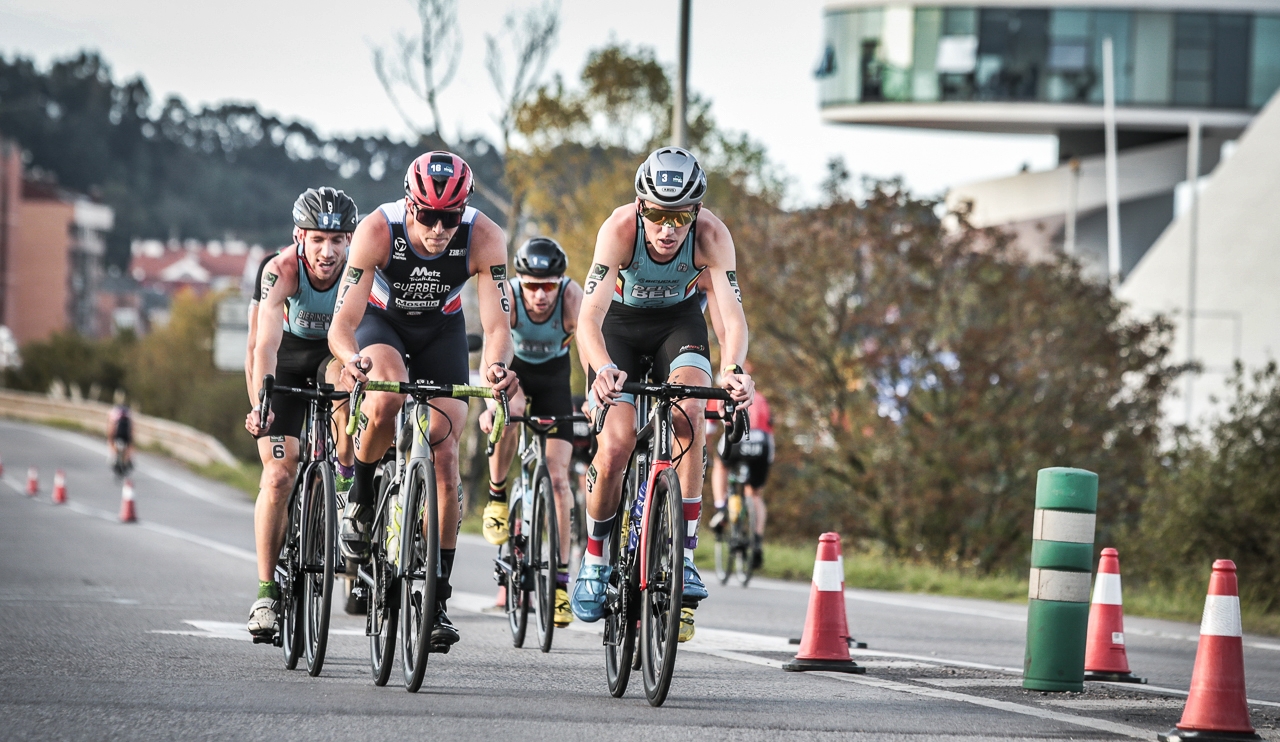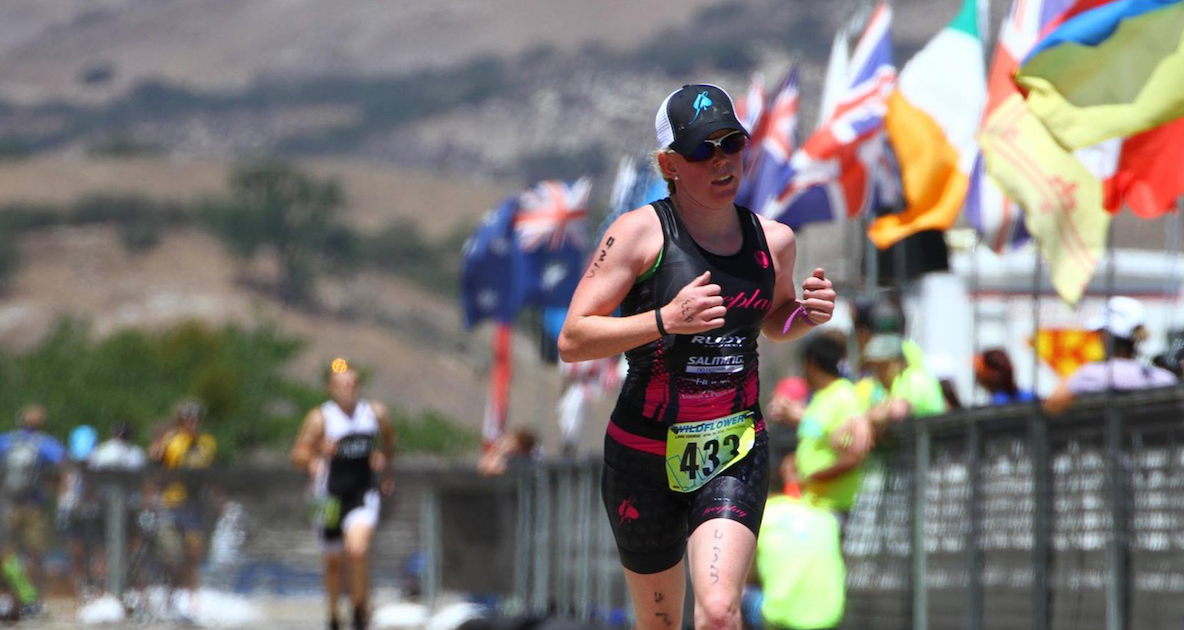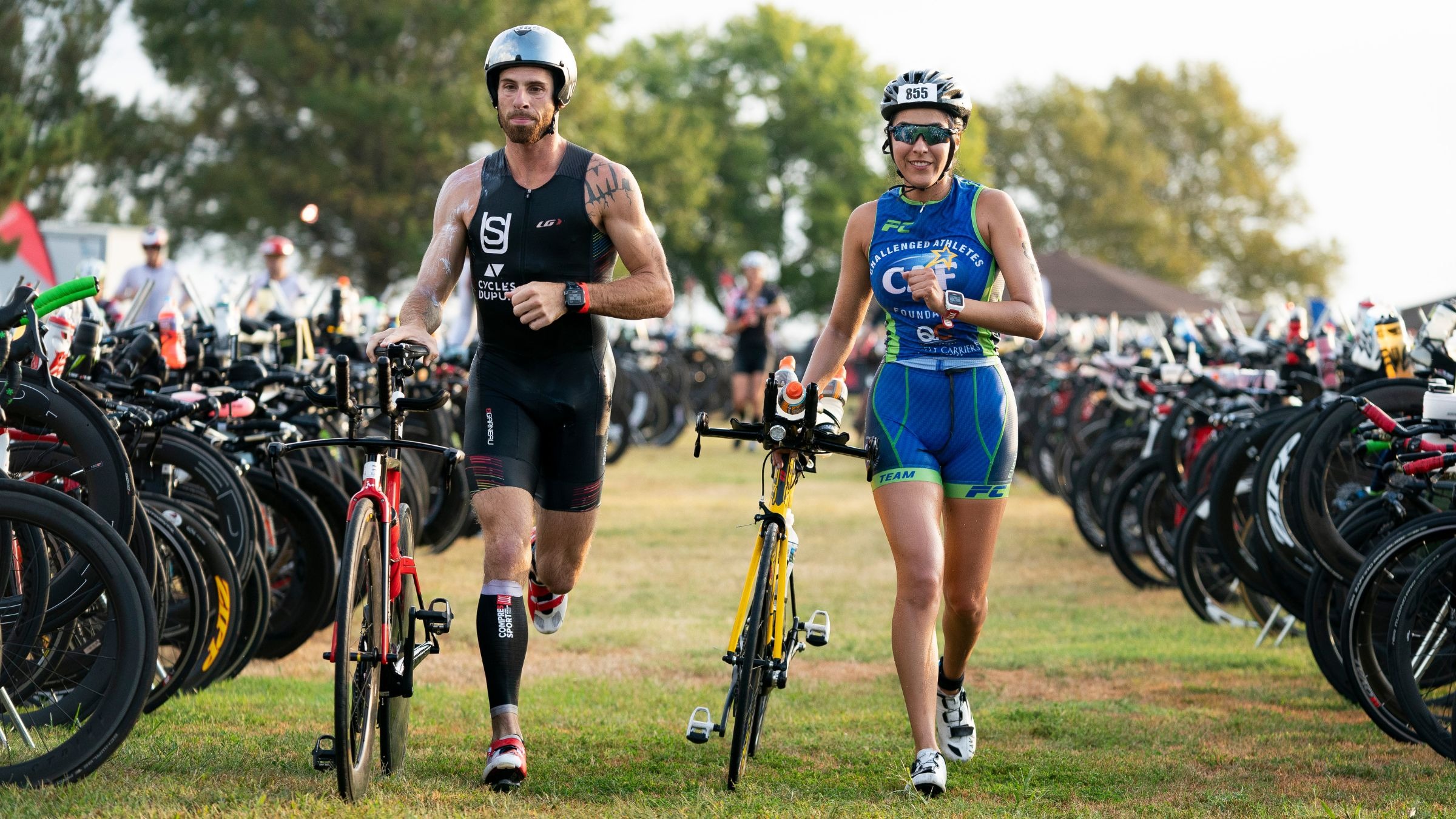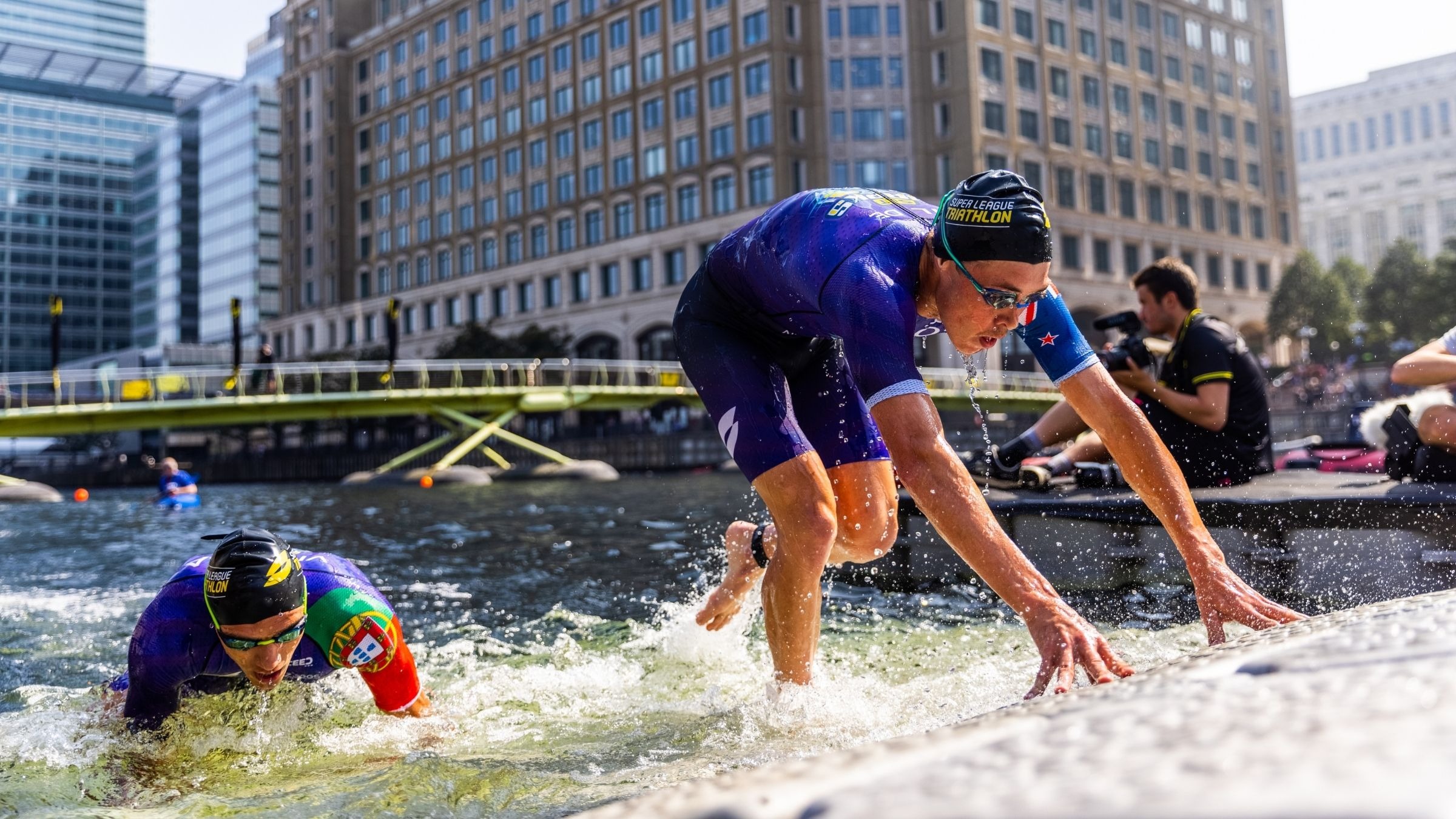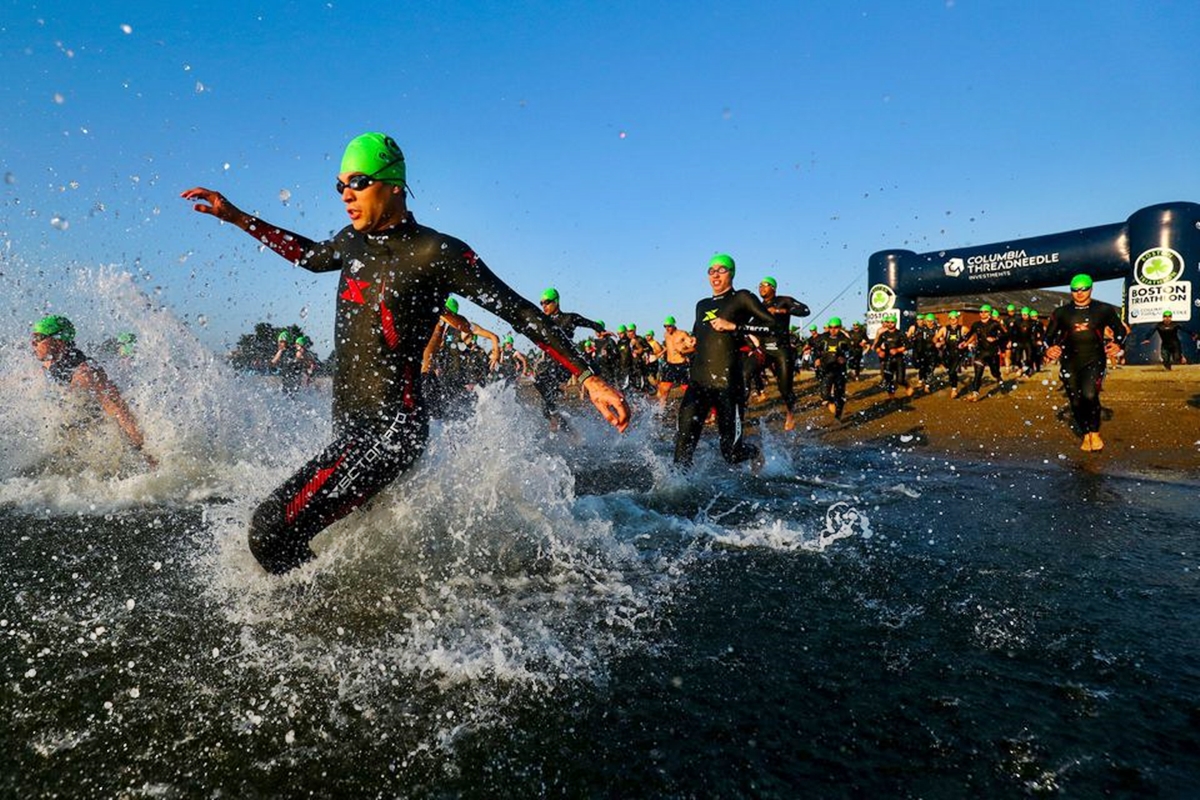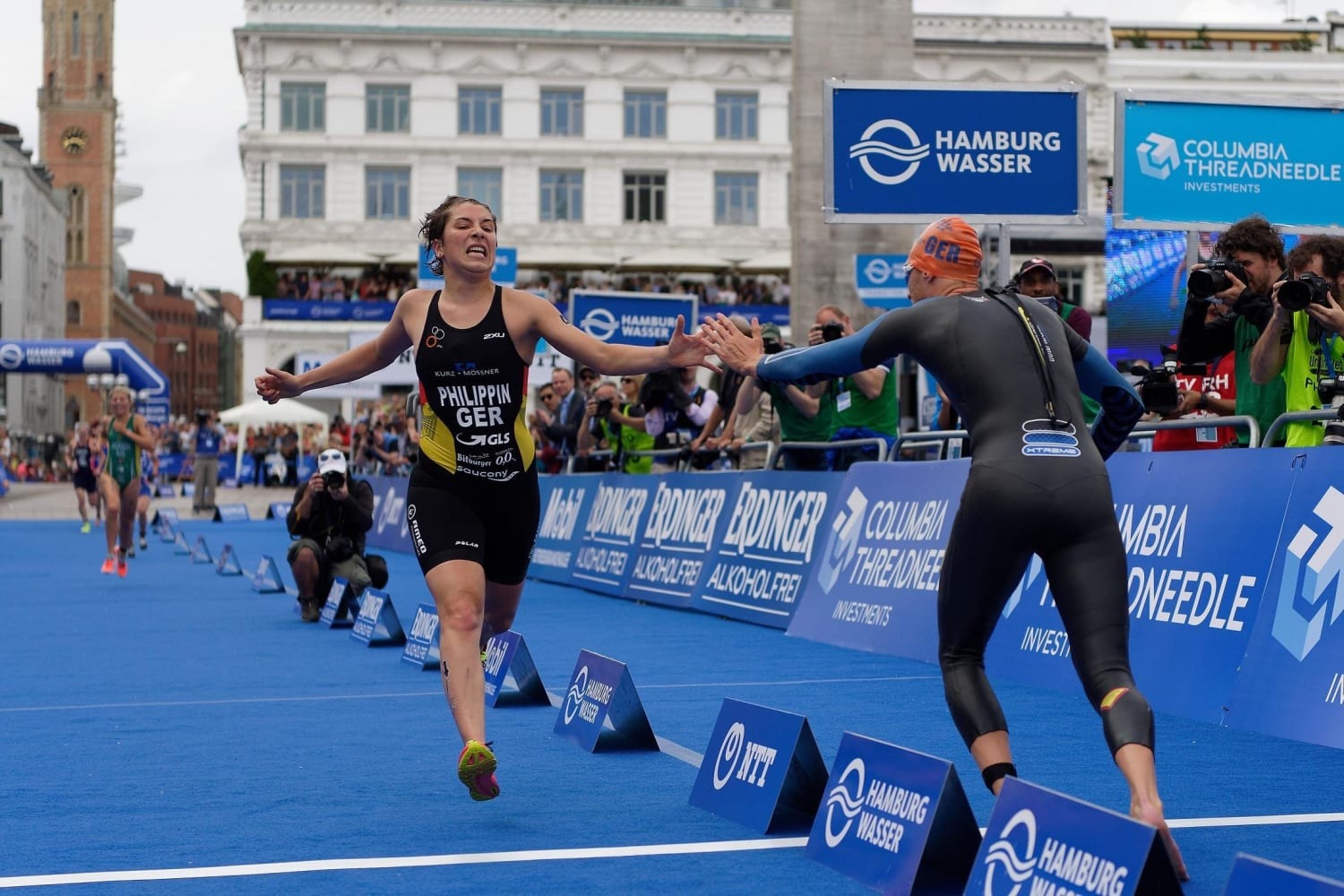

Featured
How Does A Triathlon Relay Work
Modified: January 2, 2024
Wondering how a triathlon relay works? Get all the details on this featured sport event, from team dynamics to strategy, and start training for your next relay race!
Introduction
Welcome to the exciting world of triathlon relays! Whether you are an experienced triathlete or a newcomer to the sport, participating in a triathlon relay can be a thrilling and fulfilling experience. Triathlon relays offer a unique opportunity for individuals to come together as a team and conquer the challenges of swimming, cycling, and running collectively. In this article, we will dive deeper into the workings of a triathlon relay, exploring the team composition, relay transitions, strategies and tactics, scoring and timing, as well as the benefits and drawbacks of participating in a triathlon relay.
Triathlon relays are a variation of the traditional triathlon format, where multiple athletes work together to complete the three disciplines of swimming, cycling, and running. This team-based approach allows participants to play to their strengths, form bonds with teammates, and ultimately achieve their goals through collaborative effort. Whether you are a stronger swimmer, cyclist, or runner, the relay format enables you to excel in your respective discipline while relying on your teammates to handle the other legs.
The composition of a triathlon relay team typically consists of three members, each responsible for completing one specific leg of the race. The first team member completes the swimming portion, then passes a timing chip or wristband to the second member, who takes over for the cycling segment. Finally, the third member receives the chip or wristband and finishes the race by running to the finish line. This transition between team members adds an element of excitement and camaraderie to the event, allowing for strategizing and efficient handovers.
Strategies and tactics play a crucial role in triathlon relays. Teams must carefully plan their approach considering the strengths and weaknesses of each member, as well as the distance and terrain of the race. Communication and coordination among team members are essential to ensure smooth transitions and maximize overall team performance. Some teams opt for a strategy where each member completes consecutive legs, while others may choose to rotate legs to take advantage of individual expertise.
When it comes to scoring and timing, triathlon relays operate on a collective timing basis. The total race time for the team is calculated from the sum of each member’s individual leg times. This means that even if one team member performs exceptionally well, the overall performance is dependent on the entire team’s efforts. This aspect emphasizes the importance of teamwork, motivation, and support among teammates throughout the race.
Understanding Triathlon Relay
Triathlon relay is an exciting variation of the traditional triathlon, where a team of athletes works together to complete the three disciplines of swimming, cycling, and running. In this section, we will explore the different aspects of triathlon relay, including team composition, relay transitions, strategies and tactics, scoring and timing, and the overall dynamics of this team-based event.
At its core, a triathlon relay is all about collaboration and teamwork. Instead of one individual completing all three legs of the race, team members specialize in one specific discipline. The first team member starts with the swimming portion and then hands off the timing chip or wristband to the second member, who takes over for the cycling segment. Finally, the third team member receives the chip or wristband and finishes the race by running to the finish line.
One of the key advantages of a triathlon relay is that it allows participants to focus on their strengths and optimize their performance in a specific discipline. This means that if you’re a strong swimmer but not as proficient in cycling or running, you can still contribute to your team’s success by excelling in the swimming leg. Similarly, if you’re an experienced cyclist or runner but not confident in swimming, you can play to your strengths and rely on your teammates to handle the swimming portion. This division of labor ensures that each team member can give their best performance, resulting in a stronger overall team performance.
Another element that sets triathlon relays apart is the relay transition. When one team member finishes their leg, they must pass the timing chip or wristband to the next team member in a designated transition area. This transition area is where synchronization, coordination, and speed play a crucial role. Efficient handovers help minimize time lost during transitions and maintain the team’s momentum throughout the race. Teams often strategize and practice their relay transitions to optimize their performance and minimize potential errors.
Strategies and tactics are also integral to the success of a triathlon relay team. Teams must carefully plan their approach, taking into account the strengths and weaknesses of each member, as well as the course’s distance and terrain. Effective communication and coordination among team members are essential, especially during the transitions. Some teams choose a sequential strategy, where each member completes consecutive legs, while others prefer to rotate legs to maximize individual expertise and performance.
In terms of scoring and timing, triathlon relays calculate the total race time based on the sum of each team member’s individual leg times. This means that even if one team member performs exceptionally well, the overall performance is dependent on the entire team’s efforts. The collective timing approach emphasizes teamwork, motivation, and support among teammates throughout the race.
Understanding the dynamics of a triathlon relay enables athletes to harness the power of collaboration, leverage individual strengths, and work together to achieve their shared goals. Whether you’re a seasoned triathlete or new to the sport, participating in a triathlon relay can be an exhilarating experience that fosters teamwork, camaraderie, and personal growth.
Team Composition
In a triathlon relay, team composition plays a crucial role in determining the success and dynamics of the team. A well-balanced and complementary team can maximize performance and increase the chances of achieving their goals. Let’s take a closer look at the different aspects of team composition in a triathlon relay.
A typical triathlon relay team consists of three members, each specializing in one specific discipline: swimming, cycling, or running. This allows each team member to focus on their strengths and perform at their best in their respective leg of the race. The team members often have different backgrounds and skill sets, but they come together to form a cohesive unit working towards a common goal.
When selecting team members, it’s important to consider their individual abilities and experiences in their respective disciplines. The fastest swimmer on the team might take on the swimming leg, while the strongest cyclist assumes the cycling leg, and the most accomplished runner completes the running leg. Having team members who are skilled and experienced in their respective disciplines ensures that each leg of the race is performed at a high level.
Additionally, team composition should take into account factors such as physical conditioning, mental preparedness, and overall compatibility among teammates. It’s important to have a team that gels well together, communicates effectively, and supports one another throughout the race. The ability to work as a team, motivate each other, and maintain a positive team dynamic can greatly enhance performance and enjoyment of the relay experience.
Furthermore, in some cases, teams may choose to have alternate members. Alternates can step in to replace a team member in case of injury or unforeseen circumstances. Having alternates ensures that the team is always prepared and able to complete the race even if one team member encounters an issue. Alternates can also provide support and encouragement to the primary team members during training and on race day.
It’s worth noting that team composition can vary depending on the nature of the race or the specific goals of the team. In some cases, teams may opt for a gender-specific composition, with teams made up of all male or all-female members. This can either be a strategic choice or may be mandated by race organizers. Mixed-gender teams, on the other hand, allow for diverse perspectives and the opportunity to incorporate different strengths and strategies into the team dynamic.
Overall, team composition is a critical factor in the success of a triathlon relay team. By carefully considering each team member’s strengths, experiences, and compatibility, teams can create a cohesive unit that maximizes performance and fosters a positive and supportive race environment.
Relay Transition
The relay transition is a pivotal aspect of a triathlon relay, where the timing chip or wristband is passed from one team member to another. The transition process requires coordination, speed, and precision to minimize time lost and maintain the team’s momentum throughout the race. Let’s explore the intricacies of relay transitions in a triathlon relay.
During a triathlon relay, the transition area is designated as the zone where the handover between team members takes place. It is typically a marked area where the outgoing team member finishes their leg and meets the incoming team member, who is prepared to start their leg. This transition area is usually strategically located near the swim exit, bike rack, or run start, allowing for efficient and swift transitions between legs.
Effective communication and coordination between team members are crucial during the relay transition. As the outgoing team member approaches the transition area, they need to notify their teammate, who is awaiting the handover. This communication can be verbal cues, hand gestures, or pre-determined signals, ensuring that both teammates are prepared for the exchange.
The relay transition requires a synchronized transfer of the timing chip or wristband from the outgoing team member to the incoming team member. The timing chip or wristband is a small device that tracks and records the team’s official race time. It serves as the baton in a relay race, symbolizing the passing of responsibility, effort, and energy from one team member to another.
The handover during the relay transition can be done in various ways, depending on the preference and coordination between team members. Some teams opt for a direct hand-to-hand exchange, while others choose to use a designated box or mat for the transfer. It’s important for teammates to practice and refine their handovers to ensure smooth and efficient transitions.
Timing is crucial during the relay transition, as any delays or mistakes can lead to valuable time lost. Team members need to be well-rehearsed and familiar with the relay transitions to ensure a seamless process. Training and practicing transitions not only improve speed and efficiency but also build confidence and trust within the team.
It’s also worth mentioning that transition areas can get crowded during races, with multiple teams navigating through the handover process simultaneously. Patience, situational awareness, and respect for other teams are essential during these busy moments. Teams should be mindful of their surroundings and avoid any interference or disruptions with other athletes’ transitions.
The relay transition is not only a practical component but also symbolizes the essence of teamwork and collaboration. It exemplifies the support, trust, and shared effort among team members as they come together to tackle the challenges of the triathlon relay. A smooth and efficient transition sets the stage for success in the next leg and keeps the team motivated and focused on achieving their goals.
Strategies and Tactics
Strategies and tactics are vital components of a successful triathlon relay. Teams must carefully plan their approach, taking into account the strengths and weaknesses of each team member, as well as the distance and terrain of the race. Effective strategies and well-executed tactics can make a significant difference in the team’s performance. Let’s delve into the world of strategies and tactics in a triathlon relay.
One common strategy in a triathlon relay is to assign each team member to consecutive legs of the race. For example, the first team member will handle the swimming portion, the second member will take over for the cycling segment, and the third member will complete the running leg. This sequential approach can provide a smooth flow and allow each team member to maximize their performance in their specialized discipline.
However, teams may also opt for a rotating strategy, where team members take turns in different legs of the race. This strategy can be advantageous in situations where team members possess varying strengths in different disciplines. For example, if one team member is a strong swimmer but not as proficient in cycling, they may choose to rotate legs with another teammate who excels in cycling. This allows the team to leverage individual expertise and optimize the overall performance.
Another tactical consideration is pacing. Teams need to carefully manage their effort and energy throughout the race to avoid burnout and maintain a consistent performance. Pacing strategies can vary depending on the distance of the race and the individual abilities of team members. Some teams may choose a more conservative approach, focusing on maintaining a steady, sustainable pace from start to finish. Others may opt for a more aggressive strategy, trying to push the limits and gain a competitive advantage.
Communication and coordination between team members are essential for effective strategies and tactics. Clear communication ensures that everyone is on the same page, understands the plan, and can adapt accordingly. Effective coordination helps with relay transitions, ensuring smooth handovers and minimal time lost during exchanges. Teams often establish signals or cues to communicate key messages during the race, allowing for quick and efficient decision-making.
Preparation and practice play a significant role in developing successful strategies and executing effective tactics. Teams should dedicate time to train together, focusing on relay transitions, individual leg performance, and overall synchronization. By familiarizing themselves with the racecourse, they can identify potential challenges and plan strategic approaches to overcome them. The more prepared and rehearsed the team is, the better they can adapt to changing conditions and make informed decisions during the race.
It’s important to note that strategies and tactics should be flexible and adaptable. Races can present unexpected obstacles or require adjustments based on the performance of other teams. Being able to adapt and make quick decisions in response to changing circumstances is essential. Effective strategies and tactics are not set in stone but are continuously evaluated and adjusted to optimize the team’s performance throughout the race.
By developing well-thought-out strategies and executing tactical decisions effectively, teams can enhance their performance, capitalize on their strengths, and overcome challenges to achieve their goals in a triathlon relay.
Scoring and Timing
Scoring and timing are important aspects of a triathlon relay, providing a measure of performance and determining the final results. Unlike individual triathlons, where each athlete’s time is recorded individually, triathlon relays operate on a collective timing basis. Let’s explore how scoring and timing work in a triathlon relay.
In a triathlon relay, the total race time for the team is calculated from the sum of each team member’s individual leg times. This means that the performance of each team member directly contributes to the overall result. For instance, if the first team member completes the swimming leg in 20 minutes, the second team member finishes the cycling leg in 1 hour, and the third team member completes the running leg in 45 minutes, the team’s total race time would be 2 hours and 5 minutes.
The collective timing approach underscores the importance of teamwork and emphasizes that the overall performance is dependent on the efforts of the entire team. Even if one team member performs exceptionally well, it is the combined effort that ultimately determines the team’s success. This aspect promotes cooperation, support, and motivation among teammates throughout the race.
Timing chips or wristbands are used to accurately record the team’s race time. Each team member wears the timing chip or wristband during their respective leg, and it is passed on to the next team member during the relay transition. The timing chip or wristband is equipped with electronic technology that detects and records the start and finish times for each team member, ensuring precise and reliable timing.
The relay transition plays a crucial role in the timing process. It is important for teams to execute smooth transitions to minimize any delay in the handover of the timing chip or wristband. Time spent during transitions is included in the team’s overall race time. Therefore, efficient relay transitions contribute not only to maintaining the team’s momentum but also to optimizing their final result.
In addition to the overall race time, intermediate split times may also be recorded to measure the performance of each team member during their individual leg. These split times enable teams to analyze their performance and identify areas for improvement. They can help pinpoint strengths and weaknesses, allowing teams to strategize and adjust their plans for future races.
Scoring in a triathlon relay is typically based on the total race time and may vary depending on the specific event or race organization. Teams are ranked according to their collective race time, with the fastest team securing the top position. Prizes or recognition are often awarded to the teams that achieve the highest rankings in their respective categories.
Timing and scoring technology continue to evolve, offering more accurate and sophisticated methods of recording and analyzing performance. This allows athletes and teams to track their progress and compare their results with other competitors, fostering a sense of healthy competition and personal growth within the triathlon community.
In summary, scoring and timing in a triathlon relay are based on the collective race time of the team, calculated from each team member’s individual leg times. The precise recording of times is facilitated by timing chips or wristbands, ensuring accurate results. The collective timing approach highlights the importance of teamwork and motivates team members to support each other throughout the race.
Training for a Triathlon Relay
Training for a triathlon relay requires a comprehensive and focused approach that addresses the unique challenges of the swim, bike, and run disciplines. To achieve optimal performance and ensure a successful relay experience, teams must engage in specific training programs that develop individual skills and foster teamwork. Let’s explore the key considerations and strategies for training for a triathlon relay.
Individual Discipline Training: Each team member should focus on training for their specialized leg of the race. Swimmers can concentrate on building endurance, improving stroke technique, and practicing open water skills. Cyclists should focus on building strength, developing cycling technique, and improving their speed on various terrains. Runners can work on building endurance, increasing speed, and refining their running form.
Transitions: Training for smooth and efficient transitions is crucial in a triathlon relay. Teams should allocate time to practice relay transitions, including the handover of the timing chip or wristband, equipment setup, and mental preparation for the next leg. By rehearsing these transitions, teams can minimize time lost and maintain their momentum during the race.
Mock Relay Races: Simulating a relay race in training can help teams refine their strategies and build confidence. Setting up mock transition areas and completing simulated legs of the race allows team members to practice their relay transitions, pacing, and communication. It also helps identify any potential issues or adjustments needed before the actual event.
Team Training Sessions: In addition to individual training, dedicated team training sessions are essential to foster teamwork and synchronization. Team members can practice relay handovers, develop communication strategies, and improve their overall coordination during these sessions. It is also an opportunity to build trust and camaraderie among teammates, which can greatly enhance performance and team dynamics.
Mental Preparation: Training for a triathlon relay goes beyond physical fitness. Mental preparation is crucial for maintaining focus, managing race day nerves, and staying motivated throughout the race. Visualizing successful transitions, mentally rehearsing each leg of the race, and practicing positive self-talk can contribute to mental resilience and enhance performance on race day.
Race-Specific Training: Understanding the race course, its terrain, and potential challenges is important for effective training. Teams should incorporate race-specific training, such as practicing open water swimming for races held in lakes or oceans, hill training for courses with challenging elevations, or practicing running on different surfaces to adapt to varying terrains. This race-specific training prepares teams for the specific demands they will encounter during the relay.
Recovery and Rest: Rest and recovery are essential components of any training program. Adequate rest allows the body to recover and adapt to the physical demands of training. Teams should incorporate rest days into their training schedule and prioritize quality sleep, proper nutrition, and injury prevention techniques to maintain optimal performance.
Training for a triathlon relay requires dedication, discipline, and teamwork. By focusing on individual discipline training, practicing relay transitions, conducting mock relay races, and emphasizing mental preparation, teams can build the necessary skills and cohesion to tackle the challenges of the relay race successfully. With proper training and a shared commitment to excellence, teams can maximize their performance and create memorable experiences in the triathlon relay.
Benefits and Drawbacks of Triathlon Relay
Participating in a triathlon relay offers a range of benefits and drawbacks. Understanding these can help individuals and teams make informed decisions about whether to pursue this team-based racing format. Let’s explore the advantages and disadvantages of triathlon relay.
Benefits:
– Teamwork and Camaraderie: Triathlon relay fosters a strong sense of teamwork and camaraderie among teammates. It allows individuals to come together, support each other, and collectively conquer the challenges of the swim, bike, and run disciplines. The bonds formed during training and the race can create lasting friendships and a shared sense of achievement.
– Specialization and Optimization: In a triathlon relay, team members can focus on their specific strengths and optimize their performance in one discipline. This specialization allows individuals to excel in their domain, contributing to the overall success of the team. It also provides an opportunity for individuals to learn from and be inspired by their teammates’ expertise.
– Increased Accessibility: Triathlon relay makes the sport more accessible to individuals who may not have the desire or ability to complete all three disciplines individually. Participants can choose to focus on their preferred discipline, enabling a wider range of individuals to experience the excitement of triathlon.
– Shared Responsibility: In a relay, the load and pressure are shared among teammates. This can alleviate some of the physical and mental demands that come with completing a full triathlon individually. The ability to rely on teammates for support and encouragement can help individuals push beyond their limits and achieve their personal best.
Drawbacks:
– Limited Race Experience: Participating in a triathlon relay means completing only one leg of the race rather than experiencing the full physical and mental challenge of all three disciplines. This can be viewed as a drawback for individuals seeking a comprehensive triathlon experience and the personal accomplishment of finishing the whole race.
– Relay Transition Challenges: The relay transition requires precision and coordination between teammates. If not executed smoothly, transitions can lead to valuable time lost. Teams must dedicate time to practice and ensure seamless handovers to optimize their performance. The added complexity of relay transitions can be seen as a challenge for some participants.
– Dependence on Teammates: In a triathlon relay, success relies on the collective effort and performance of the entire team. While this emphasizes teamwork, it also means that individual performance is tied to the abilities and efforts of teammates. Team dynamics and compatibility play a crucial role in achieving optimal results.
– Logistical Considerations: Triathlon relay requires coordination among team members for race registration, logistics, and coordination of training schedules. It may also involve additional costs, such as team uniforms, race entry fees, and travel expenses if the event is held away from home. These logistical factors need to be taken into account when considering participation in a triathlon relay.
Overall, the benefits of teamwork, specialization, increased accessibility, and shared responsibility make triathlon relay an appealing option for many athletes. However, the limited race experience, relay transition challenges, dependence on teammates, and logistical considerations should also be considered when deciding whether to pursue this racing format. It is important for individuals and teams to weigh these factors and determine if the triathlon relay aligns with their goals and preferences.
Conclusion
Participating in a triathlon relay can be an exhilarating and rewarding experience for athletes of all levels. From the teamwork and camaraderie to the specialization and optimization of individual skills, there are numerous benefits to be gained from this team-based racing format. Triathlon relay allows individuals to come together, support each other, and achieve their shared goals.
Throughout this article, we have explored the various aspects of a triathlon relay, including team composition, relay transitions, strategies and tactics, scoring and timing, and the training involved. By understanding these elements, athletes and teams can better prepare and maximize their performance in the relay race.
While there are potential drawbacks to consider, such as the limited race experience and the reliance on teammates, the benefits of triathlon relay greatly outweigh these concerns for many participants. The sense of achievement, the bonds formed among teammates, and the accessibility for individuals with varying abilities make triathlon relay an attractive choice for many.
Overall, triathlon relay offers a unique and thrilling opportunity. It challenges individuals to push their limits, rely on their teammates, and work together to accomplish their goals. Whether you are a seasoned triathlete looking for a fresh way to engage in the sport or a rookie looking to experience the triathlon world, a triathlon relay can provide an unforgettable adventure.
So gather your team, develop your strategies, and embark on the exciting journey of a triathlon relay. Embrace the challenges, celebrate the victories, and create lasting memories as you overcome the swim, bike, and run together.
